The Tyrannosaurs at Te Papa Museum were almost ready to move on, so we took a train trip into Wellington to catch up with them while we could, collecting Geoff on the way. We boarded the train at Waikanae, and the happy guard handed out tickets in our carriage, making quips to everyone as he took their money, or in our case, sighted our very handy Gold Card. (Seniors get free train travel between 9.00am and 3.00pm thanks to the Gold Card).
As we entered the exhibition, we came face to face with one of the earliest tyrannosaurs yet to be discovered, Guanlong. Its name means "crown dragon," and refers to this meat-eater's prominent crest, roamed eastern Asia during the late Jurassic period. I was intrigued with its covering of silky green feathers, as well as the head crest.
There were bones aplenty, this one is Albertosaurus from Canada. More than 1000 Albertsaurus bones have been unearthed from the Red Deer River in Alberta, Canada, making this a treasure trove for palaeontologists to study.
And then there was Tyrannosaurus Rex, the biggest and meanest of them all. This specimen was discovered at Saskatchewan, Canada, and was painstakingly removed, bone by bone, from the rocks and mud.
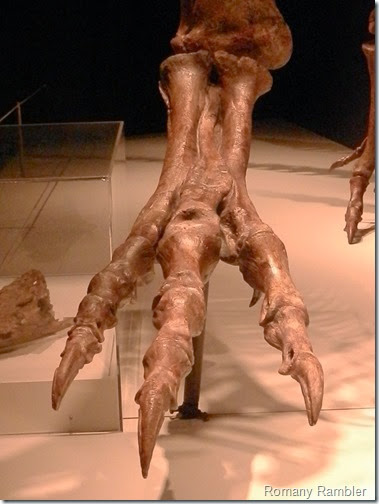
We read that dinosaurs aren’t really extinct. Avian dinosaurs, otherwise known as birds, still fly amongst us. Tyrannosaurs and birds are cousins, and share a common ancestor. And just to show us, we looked at this group, two tyrannosaurs and a modern chicken – they have a very similar skeleton, and check out those feathers.
We were kept entertained by a film of what the Wellington waterfront and Te Papa would look like if it was invaded by dinosaurs. First little ones appeared, hopping around, minding their own business. It was very clever indeed, and the film was so lifelike that one little boy watching got quite upset by it all. “Will they eat us, will they eat us?”, he kept asking his Dad.
Here in New Zealand it has been discovered that dinosaurs once roamed our lands. After reading all she could about dinosaurs, Joan Wiffen from Napier set out to prove that these ancient reptiles once lived in New Zealand, although most experts doubted this fact. In 1975 she discovered the first dinosaur fossils in New Zealand in the Maungahounga Valley in Northern Hawkes Bay, being the tail bone of a theropod dinosaur. She went on to discover bones from several different species. Not bad going for an amateur palaeontologist. Joan Wiffen has received many honours for her work, and was appointed a Commander of the Order of the British Empire for services to science in 1995. We can be very proud of her contributions in this field.
We enjoyed the exhibition, full of interesting facts and figures, and loved the interactive displays. As did the youngsters. One of the display areas had a screen on the wall, and a spot marked on the floor, with the words “Stand here if you Dare”. Once someone was standing on the spot the screen lit up showing pictures of the crowd. Then dinosaurs appeared on screen, moving amongst the people – or so it seemed. That set off screams and shouts, I can tell you. It was very very well done and so lifelike. The exhibition was well worth seeing.
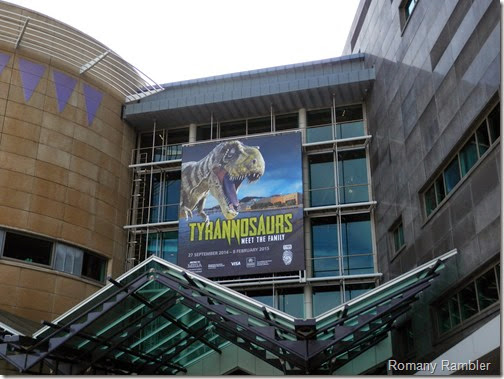
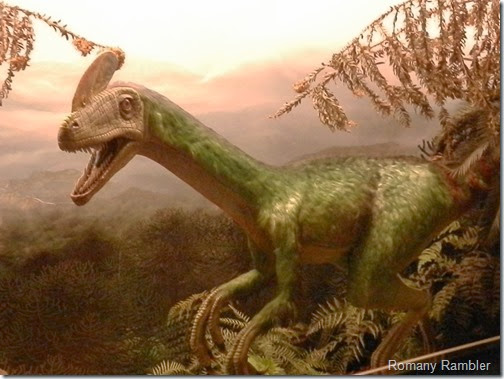


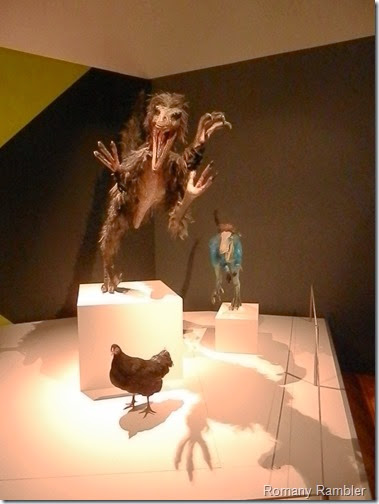
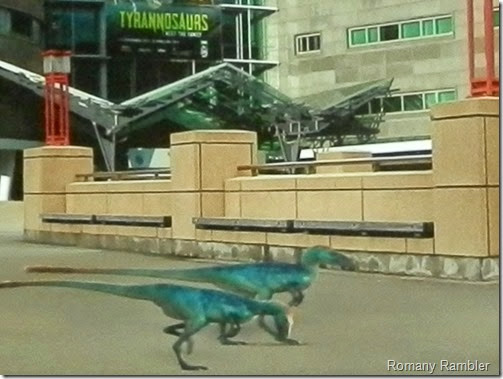
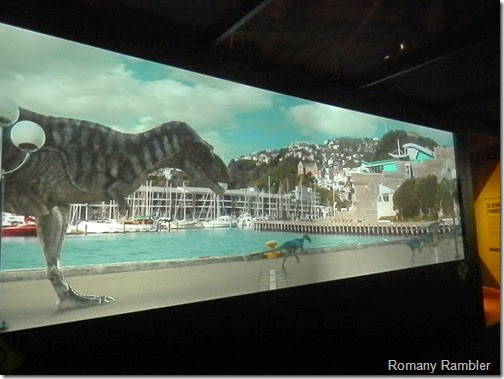
No comments:
Post a Comment